Les Fleurs du Mal: An Illustrated History
Les Fleurs du Mal: An Illustrated History
Few books have had more impact on modern literature than Charles Baudelaire’s compendium of poems, Les Fleurs du Mal, of 1857. Exploring humanity’s many contradictions, Les Fleurs du Mal’s melancholic and erotic verse ensconces the good and the bad, the beautiful and the ugly, the spleen and the ideal. With the poems’ rich symbolism and lexicon, it is not surprising that the poet’s masterpiece has inspired generations of artists to interpret his work through illustration. These illustrated volumes exemplify the tradition of the livre d’artiste in French literature.
Kevin Milewski was a Library Fellow in 2013. His project titled Les Fleurs du Mal: An Illustrated History, curated the illustrated editions of Les Fleurs du Mal from the WT Bandy Collection of Baudelaire and Modern French Studies and created an online exhibition, including a comprehensive bibliography. Kevin is a lawyer currently living in New York, specializing in copyright law.
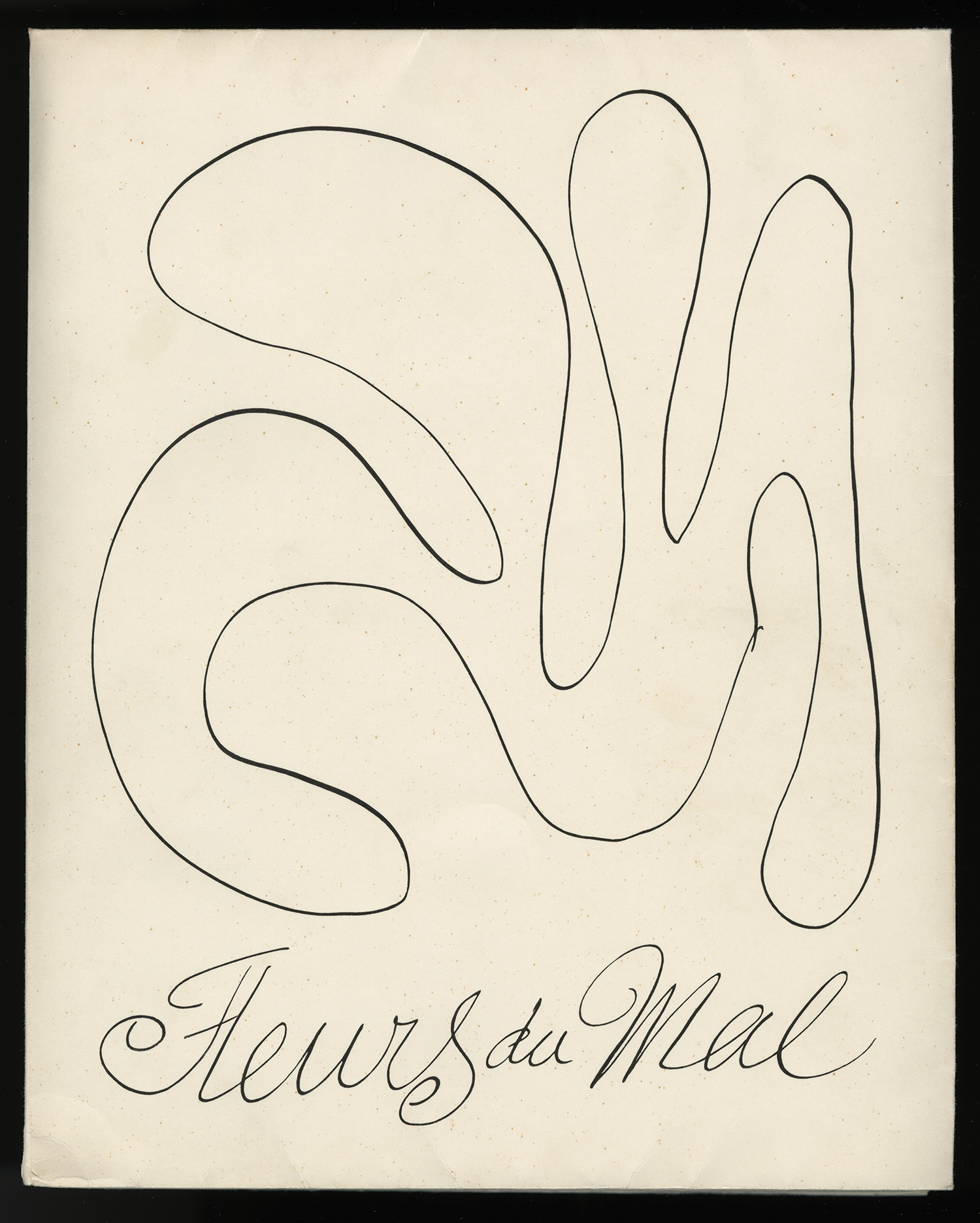
Les Fleurs du Mal
Charles Baudelaire, illustrated by Henri Matisse
Paris: Bibliothèque française, 1947
Vanderbilt University Special Collections
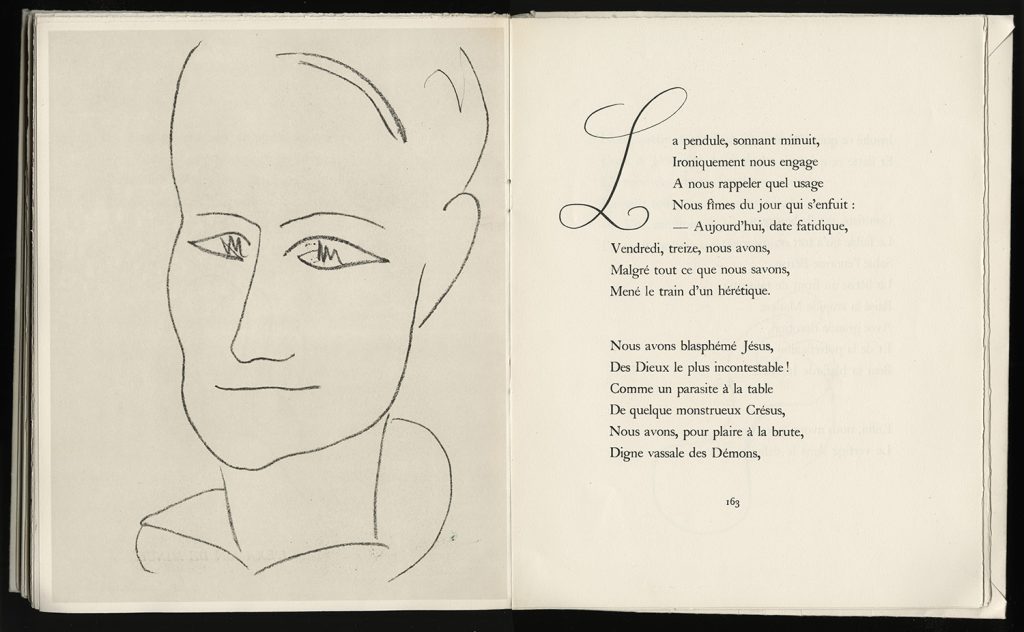
The Jean and Alexander Heard Library acquired this rare first edition with generous funding provided by the Heard Society. Henri Matisse (1869-1954) worked on his illustrations for Les Fleurs du Mal from 1944 to 1947. Published by La Bibliothèque Francaise, this volume was one of three hundred copies signed by the artist. Matisse matches thirty-three poems with delicate line portraits, primarily of women, but also of Baudelaire, Apollinaire, and a self-portrait. It is said that as Matisse pondered how to match the character of the poems, he declared that “the drawing should be the visual equivalent of the poem.”
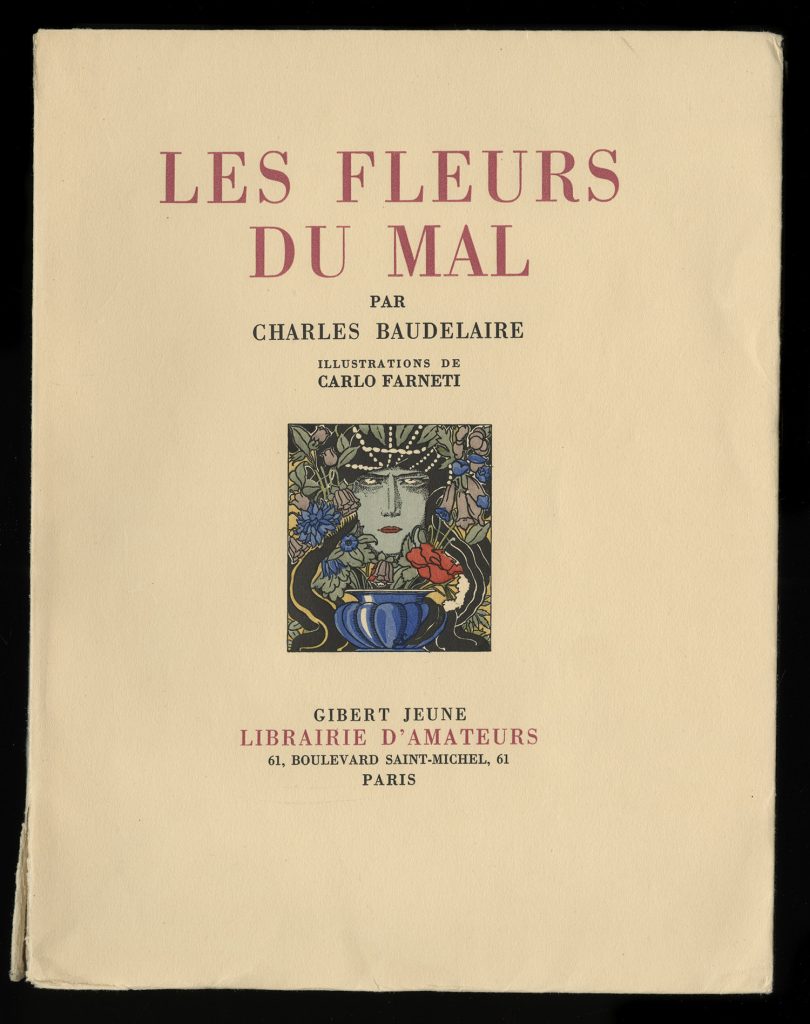
Les Fleurs du Mal
Charles Baudelaire, illustrated by Carlo Farneti
Paris: Gibert Jeune, Librairie d’amateurs, 1935
Vanderbilt University Special Collections
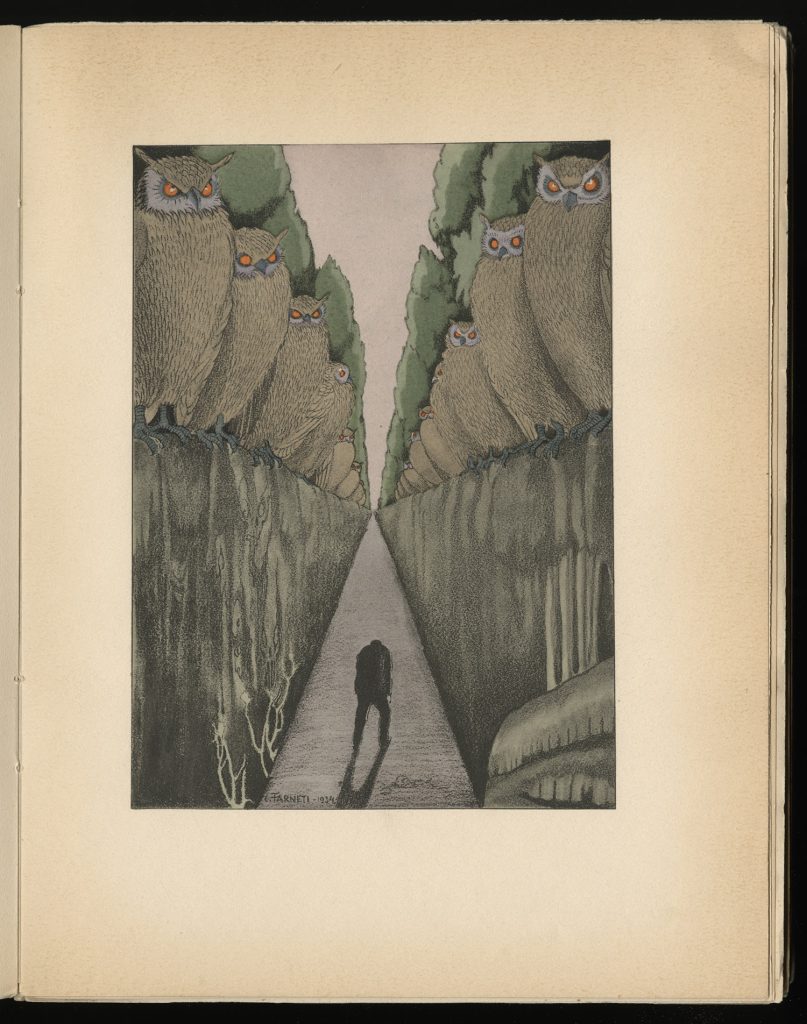
Carlo Farneti (1892-1961) was born in Naples and moved to Paris in 1926. He also illustrated works by Émile Zola, Edgar Allan Poe, and Jack London. He provides sixteen full-page, colored plates as well as one hundred black-and-white head and tailpieces for each of the poems. His beautifully rendered, yet unsettling images are highly symbolic. In particular, one illustration for “Les Hiboux” features a hunched silhouette stumbling down an endless path, surrounded by menacing owls, towering trees, and his own, long shadow.
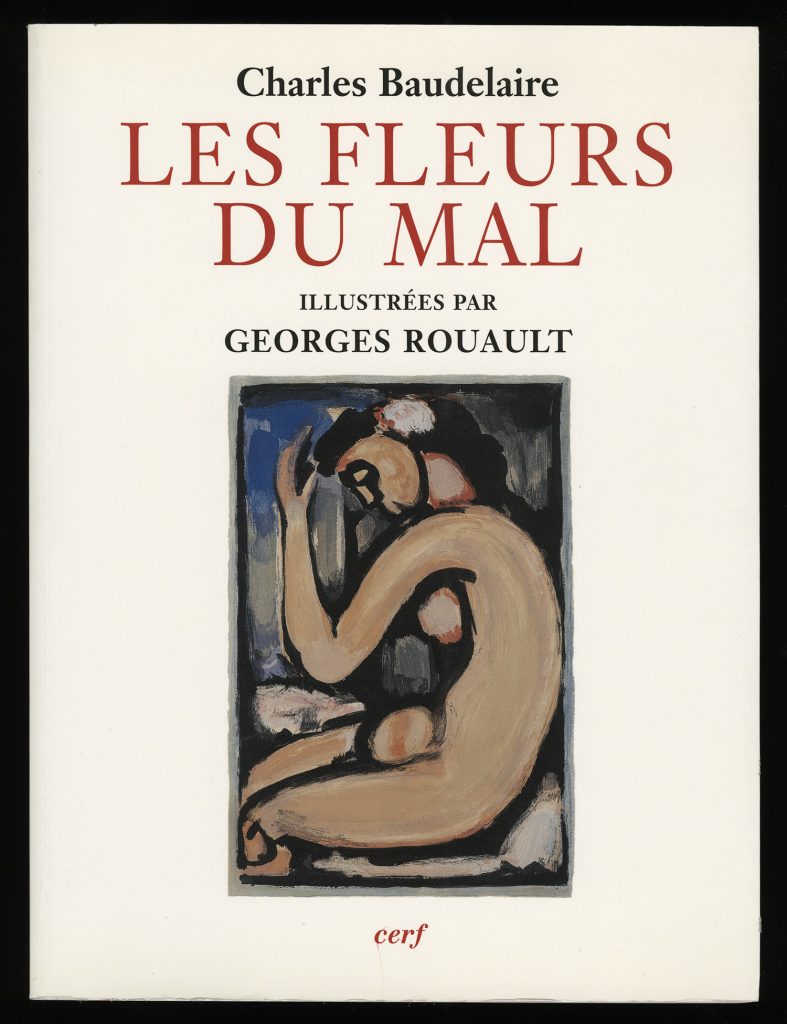
Les Fleurs du Mal
Charles Baudelaire, illustrated by Georges Rouault
Paris: Cerf, 2008
Vanderbilt University Special Collections

Georges Rouault (1871-1958) was a French painter, draughtsman, and printmaker. He attended the École des Beaux-Arts in Paris with Henri Matisse. He was favorably recognized at the Salon d’Automne in 1905, along with the works displayed by Matisse and other painters in the school of Fauvism. Rouault’s style is compassionate, personal, and emotional and his subjects range from religious to modern city life. Rouault’s artistic style was frequently compared to Baudelaire’s poems.
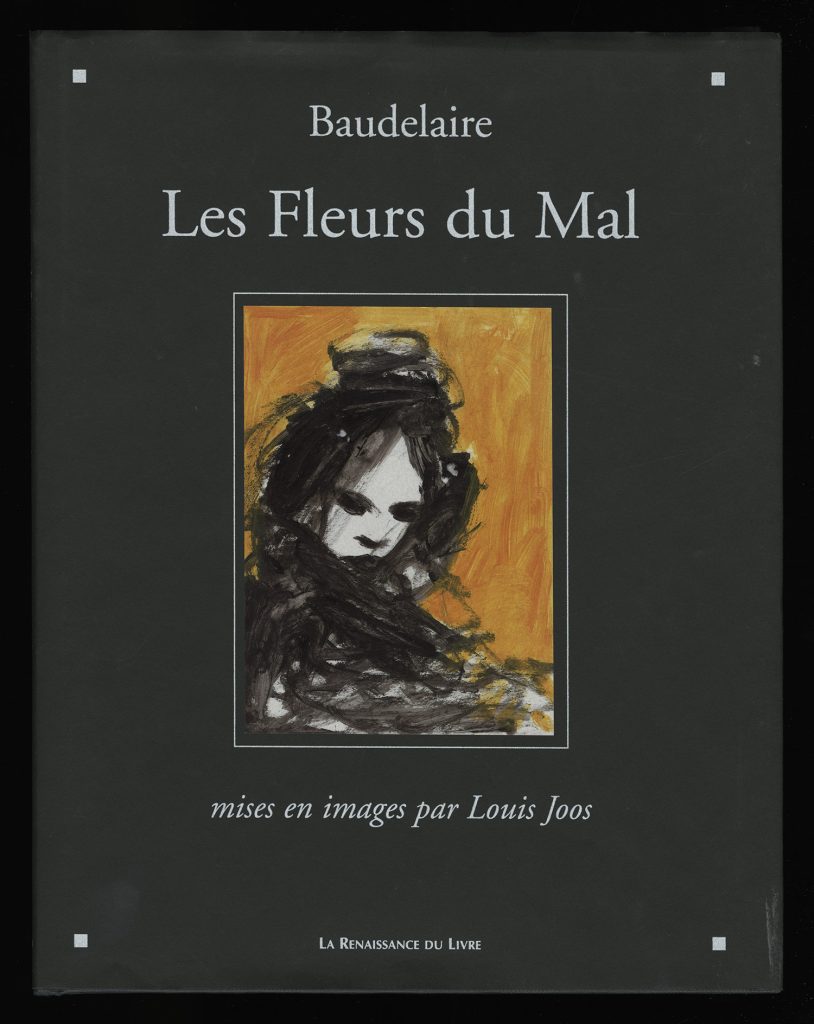
Les Fleurs du Mal
Charles Baudelaire, illustrated by Louis Joos
Tournai, Belgique: La Renaissance du livre, 2002
Vanderbilt University Special Collections
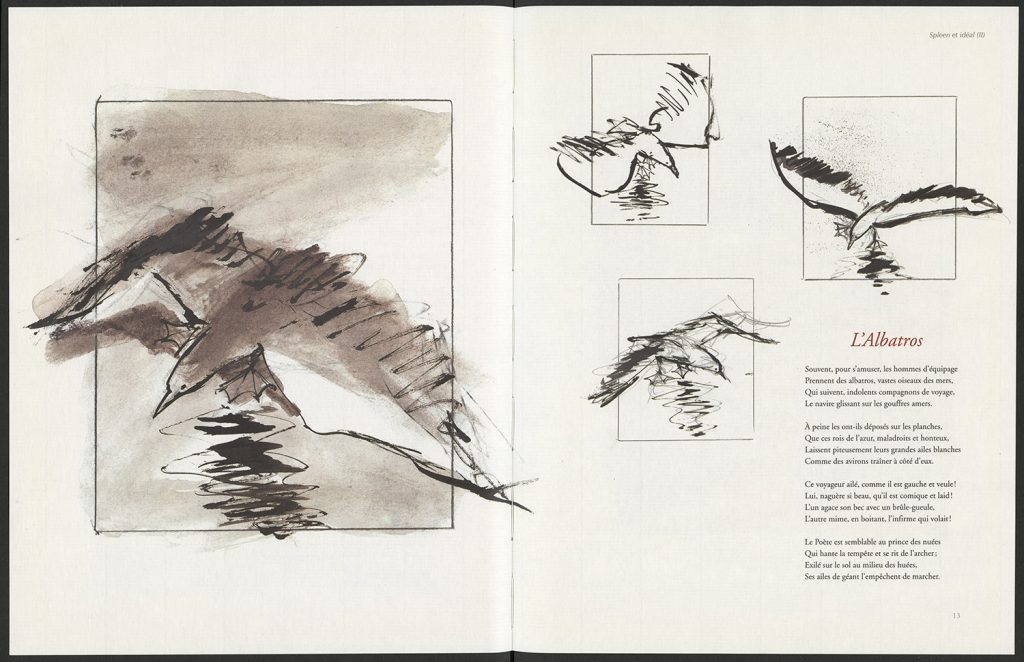
Belgian artist and cartoonist, Louis Joos (1940-) designed this brooding edition that features Parisian cityscapes and modern renditions of the femme maudit. Joos demonstrates his rich and variant palette, which reflects the contrasts between light, color, and darkness within Baudelaire’s poems. Joos’ illustrations correspond directly to several of the poems. For example, he renders the albatross, following ships out on the sea.
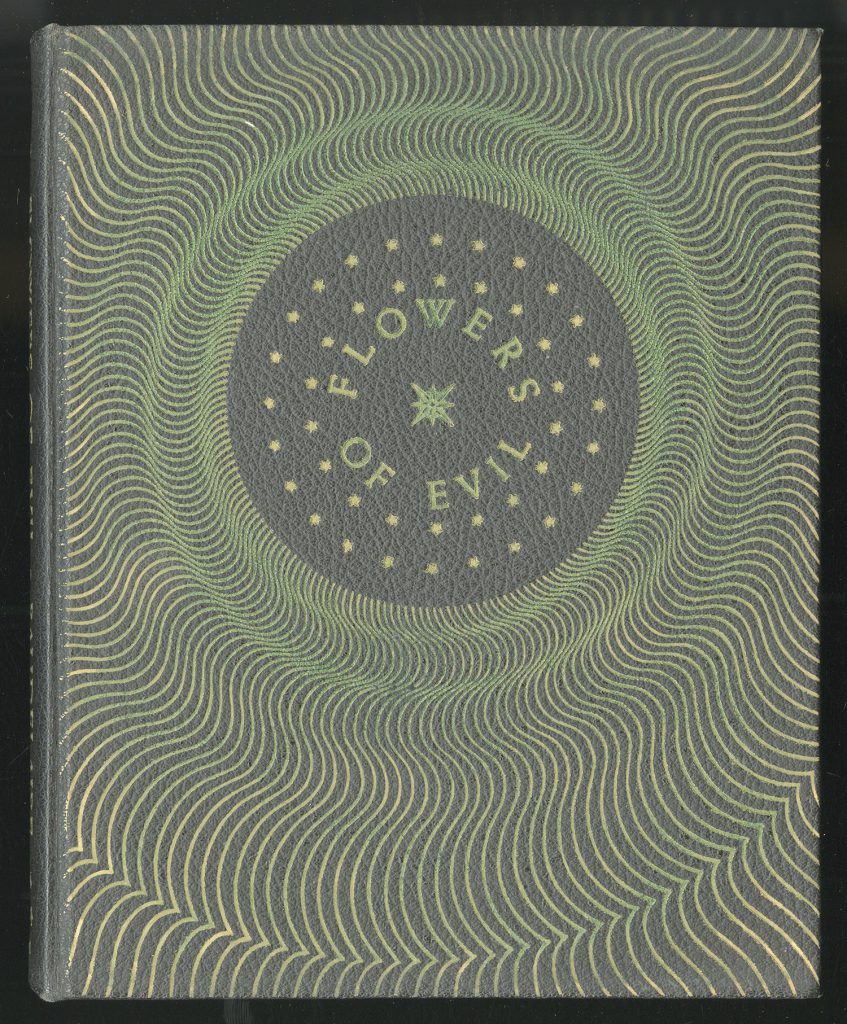
Flowers of Evil: In Pattern and Prose
Charles Baudelaire, illustrated by Beresford Egan
New York: Privately printed for the Sylvan Press, 1947
Vanderbilt University Special Collections

The illustrator, Beresford Egan (1905-1984), was born in South Africa, moved to London, and worked for small presses such as the Mandrake Press. He was considered one of the most influential British artists in the art-déco movement. Describing his work, Egan claimed, “What I do is in revulsion, to shock by the power of satire!” He also illustrated books by authors such as Pierre Louys and Aleister Crowley. His images resemble those of Aubrey Beardsley. The cover of this unique edition is black cloth with decorative green swirls. It is illustrated throughout with fifteen black and white plates of an erotic and disturbing nature. Each poem is decorated with a small plant or flower tail piece.
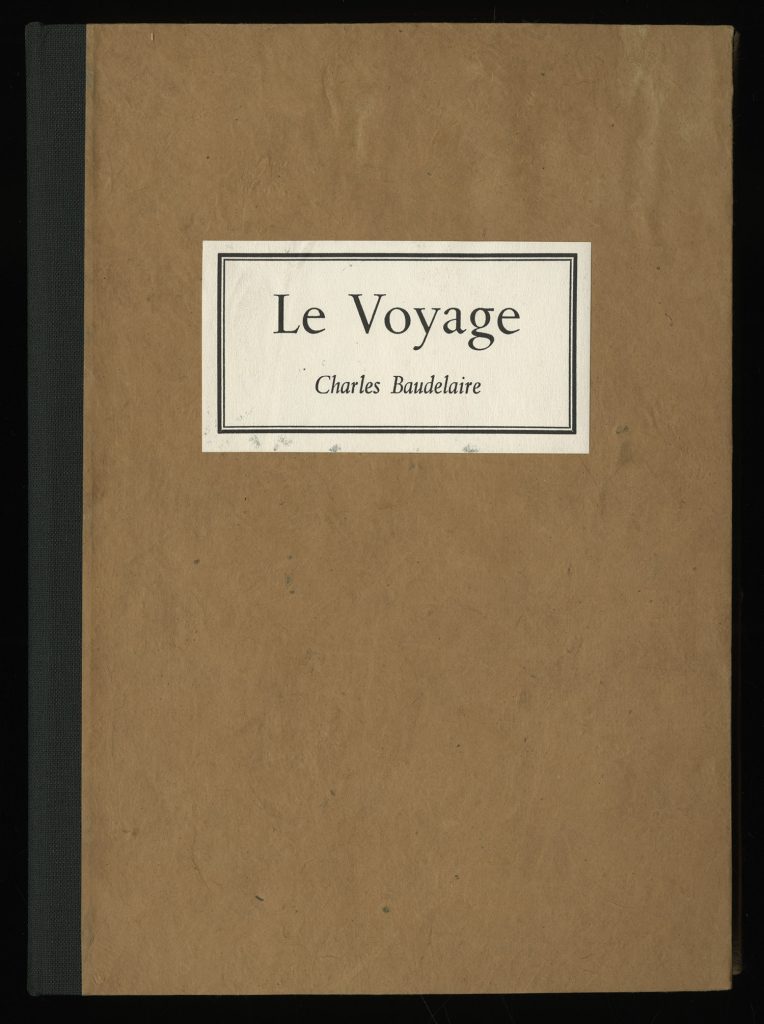
Le Voyage
Charles Baudelaire, illustrated by Alison Hildreth
Portland, Maine: Wolfe Editions, 1998
Vanderbilt University Special Collections
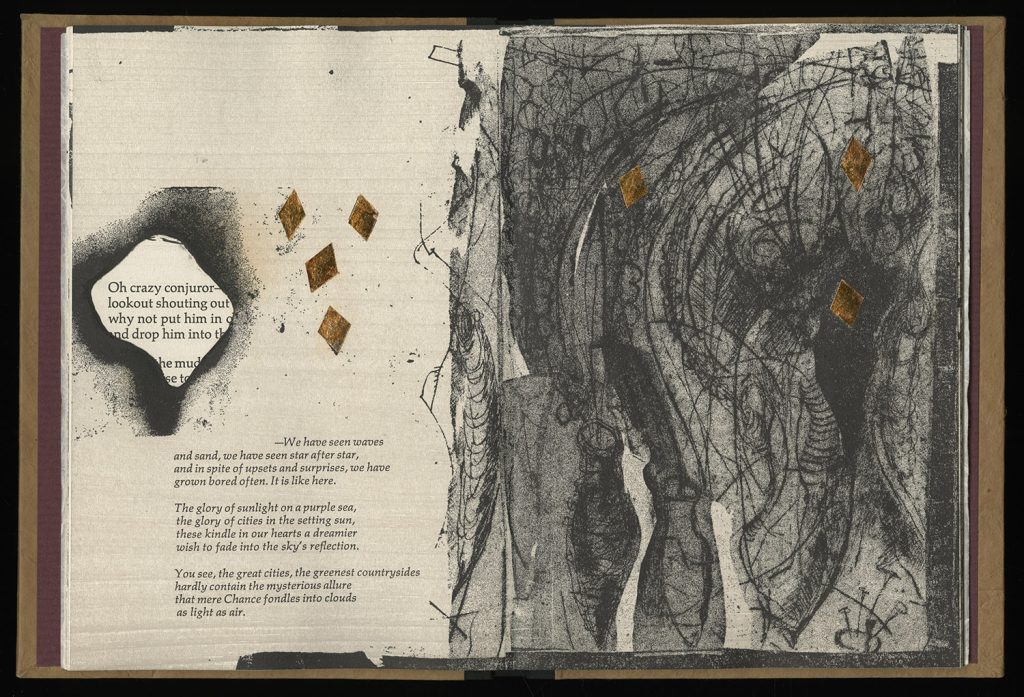
Alison Hildreth (1934-) is an illustrious painter, draughtsman, and installation artist based out of Maine. Her collections are featured in both the Metropolitan Museum of Art and the New York Public Library. The text of Le Voyage is set within dark, abstract waves, which occasionally peek through deliberate holes in the page. Gold foil decorates several of the pages, adding life to the cloudy designs. The work is bound in brown paper boards with a black cloth spine and paper title label pasted to the front board. Burgundy textured endpapers with Japanese paper guards protect the first and last pages. This artist’s book is numbered 34 out of 100 and is signed by the artist.
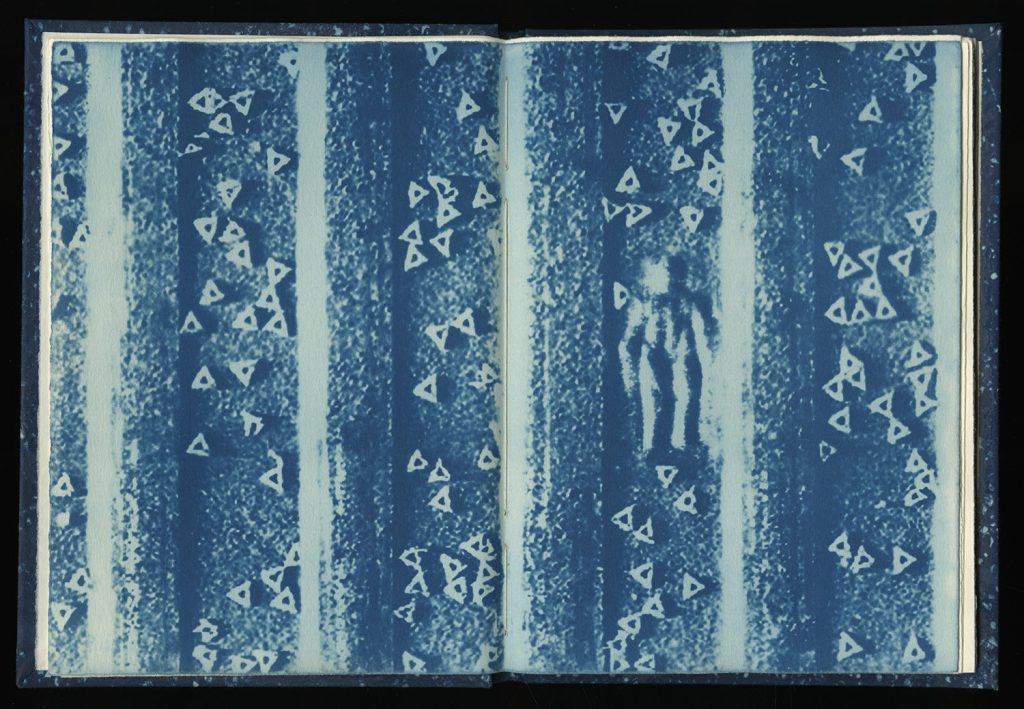
The Poor: Six Prose Poems
Charles Baudelaire, illustrated by George Laws Weinberg
Brooklyn, N.Y.: Maquokeeta, 2010
Vanderbilt University Special Collections
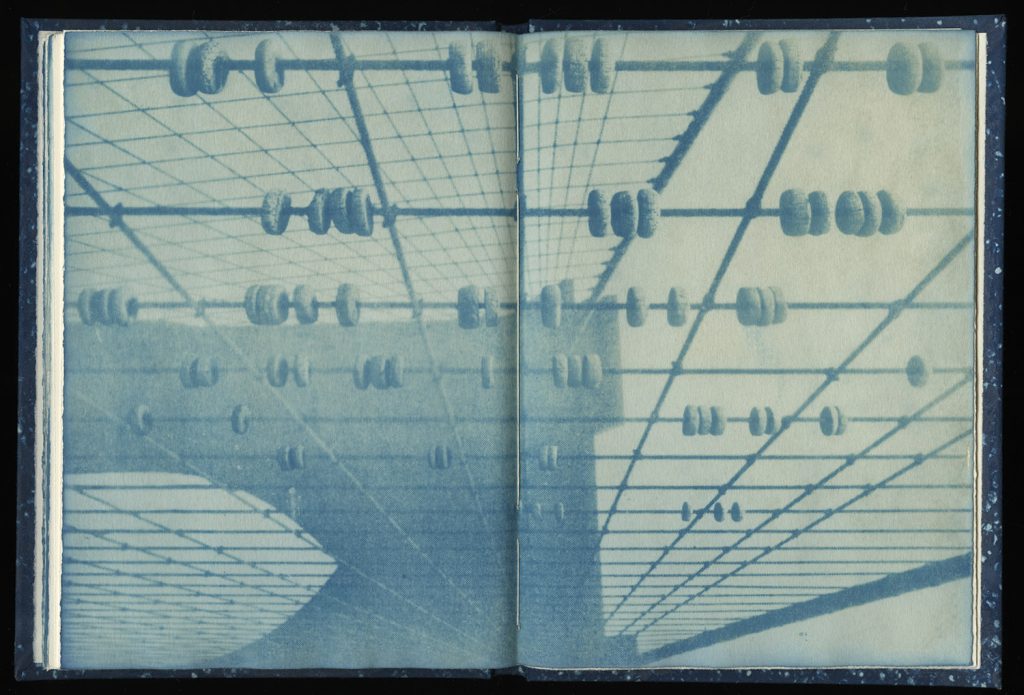
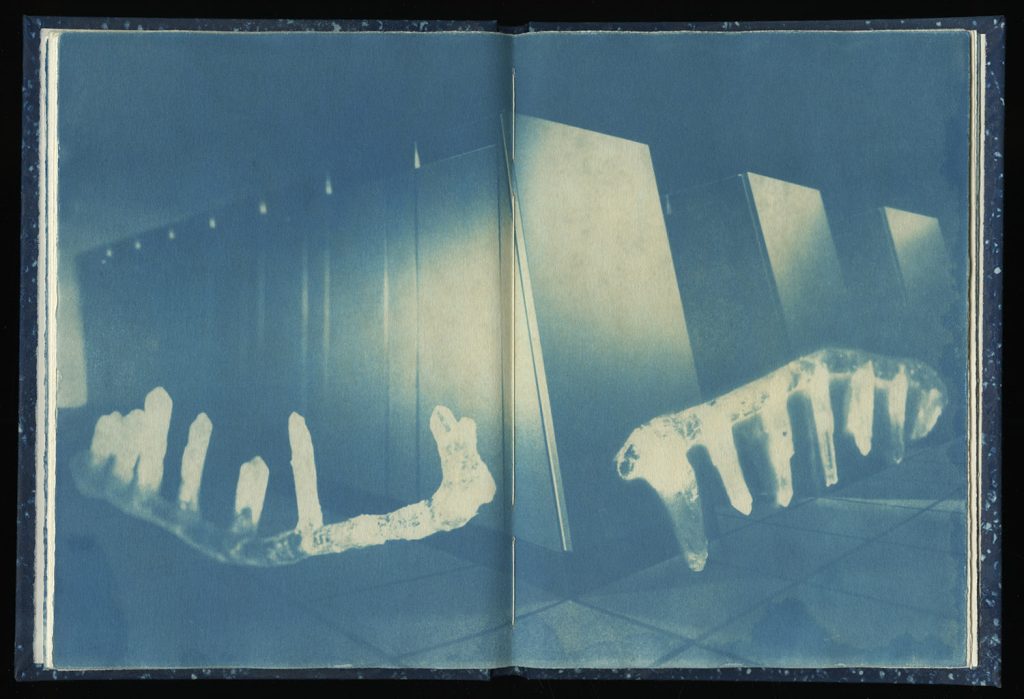
The “blue” of the prints results from a cyanotype process—an early 19th-century photographic chemical process using iron. George Laws Weinberg designed this edition with consideration of the tension between using 19th-century technology (of Baudelaire’s time) to depict 21st-century technologies, like the nanoscale DNA structures in the first print made by IBM scientists for IBM supercomputers, called “Blue Gene.” This is number 10 of 50 copies published.
